Building Agility From the Ground Up – Brett Klika
As youth strength and conditioning coaches, we often find that the basic skills of athleticism we once took for granted with youngsters are now underdeveloped or missing altogether. This is most apparent in pre-pubescent athletes as inactivity and lack of physical education has left them at a developmental detriment.

When we have a chance to work with these children, our role now includes introducing and building the most foundational constructs of many athletic skills. In essence, we have to be able help kids build athletic skills from the ground up.
Agility is an athletic skill that many deconditioned or underprepared young children struggle with. As opposed to more absolute skills like speed and strength, agility requires fast, efficient, and frequent communication between the brain and body in response to varying demands. Building a foundation for this and other athletic skills requires an understanding of a developing child’s underlying sensorimotor circuitry.
The sensorimotor system, made up of various Perceptual Motor Skills, is responsible for linking the information a child takes in through their senses to an effective motor output. For example, a child tracks and focuses on a ball moving toward them (visual awareness). This visual information is used to develop a sense of where the ball is in relation to themselves and the surrounding area (spatial awareness). A sense of internal timing (temporal awareness) uses this sensory data and works with the proprioceptive system to move the right joints and appendages at the right time to have a glove meet the ball at some point in space.
Kids used to develop this sensory foundation through frequent free-play, physical education, and multi-sport participation. Unfortunately, fewer modern children have access or interest in all of the above. Facilitating this brain-body process has now become part of our job as a youth strength and conditioning coach.
To begin building an important athletic skill like agility, consider the different sensory-based perceptual motor skills listed below. Understanding and targeting these skills provides valuable insight as to how to build athleticism, regardless of a child’s ability. Integrate activities like the ones listed during warm ups, or other strategic times during training to start building the underlying skills for agility.
(For a list of the 9 perceptual motor skills and how they impact performance, click here).
http://spiderfitkids.com/wp-content/uploads/2017/01/Intro-Module-for-Powerful-Play-Final-8-dragged.png
Body awareness: Knowledge of the different body parts and what they do provides a child endless options for how to move their body to maneuver the demands placed on them from the environment.Body awareness activity: Body Letters
Body awareness activity: Body Letters
Visual awareness: An ability to focus, track, and take in information from a full field of vision provides essential sensory information telling a child what movement adaptations are needed to navigate the changing demands of the environment.
Visual awareness activity: *Group Tag (Hand Signs)
*Divide kids into three groups. Whichever number you are holding up, that group is “it” and tags the other groups. When tagged, perform 5 push-ups, then back in game. Change frequently.
Directional awareness: Being able recognize and respond accurately to directional cues, in addition to being able to move efficiently in different planes of motion is essential for multidirectional speed, a key component of agility.
Directional awareness activity: *Quick Feet Reaction
*Progress to not using visual cues, i.e. pointing, gesturing, etc.
Temporal awareness: Developing an internal sense of timing, rhythm, and precision helps children adapt their movement tempo based on the demands of the environment. Honing this skill also increases a child’s ability to anticipate other’s movement.
Temporal awareness activity: *My Gears
*Use different locomotion patterns, i.e. jumping, skipping, running, etc.
Spatial awareness: When a child is familiar with how much space their body takes up, in addition to their relation to other things in their environment, they are able to use this information to fine-tune movement.
Spatial awareness activity: Hop Guesser:
Proprioceptive awareness: The proprioceptive system provides constant feedback as to where joints are in relation to one another and what the load demands are for each of them. This internal feedback helps youngsters adjust movement elements like body position and force. This ability is essential in improving agility.
Proprioceptive awareness activity: 4-Way Balance
While other perceptual motor skills are involved with developing agility, start creating a foundation of those listed above. Add these activities as part of a warm up or game to get kids engaged prior to more tactical work. Consider how common games and activities performed during training could be slightly modified to focus on these and other sensory skills. Asses how a child’s level of development with these individual skills is impacting their performance.
A youth strength and conditioning coach with the knowledge and practical know-how for engineering athletic skills for all levels of youngster can inspire more kids to be athletic for life.

Brett Klika is a youth performance
expert and a regular contributor to the IYCA who is passionate about coaching young athletes. He is the creator of the SPIDERfit Kids
youth training program and has run successful youth fitness programs all over the country. Brett is an international speaker whose passion for youth fitness has helped thousands of people learn how to create exceptional training experiences for young athletes.
If you want to be better at coaching young athletes, the IYCA Youth Fitness Specialist certification is the industry gold-standard for youth fitness and sports performance. Click on the image below to learn more about the YFS1 certification program.

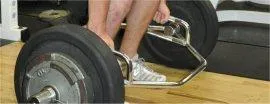
High School Strength Coach Certification
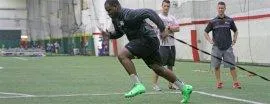
Certified Speed & Agility Specialist
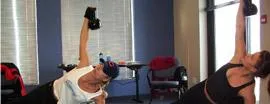
Kettlebell Instructor Course
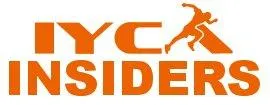
IYCA Insiders - Exclusive Access
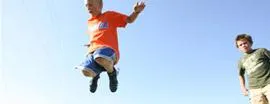
Youth Fitness Specialist Certification
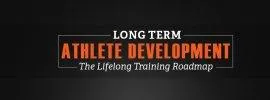
Long Term Athlete Development

Youth Nutrition Specialist Certification

Copyright © 2008 - 2025 International Youth Coaching Association. All Rights Reserved
|
|

